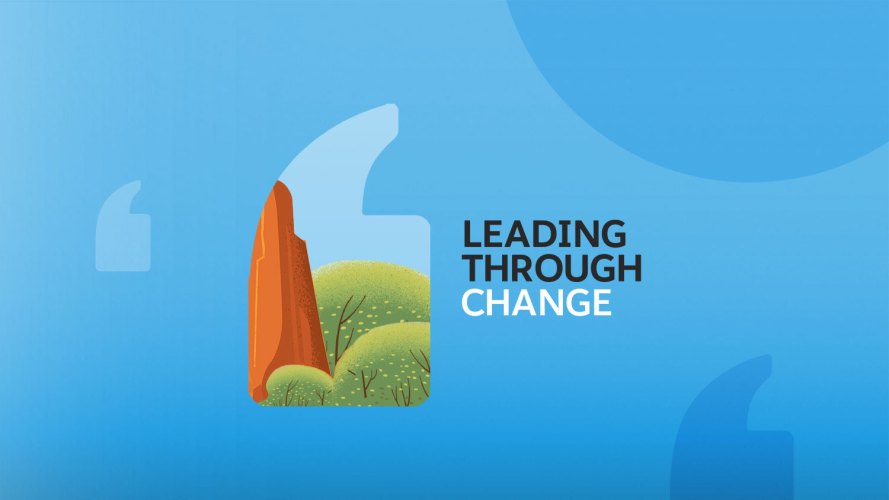James Johnson is senior vice president and chief technology officer at Robert Half.
As the chief technology officer at global staffing firm Robert Half, my position is to oversee IT operations across our more than 340 staffing locations for a workforce that includes 16,000 full-time employees and tens of thousands of engagement professionals on temporary assignments with our clients on any given day. It’s a large, complex organization. The team responsible for it all is Applications, Technology, and Innovation (ATI), and our goal is simple: to deliver an easy and seamless technology experience for everyone.
Much like Salesforce, our customers, both internal and external, are at the center of everything we do. This mindset inspired Robert Half’s digital transformation, which included building the most advanced AI in our industry and consolidating 17 different global customer relationship management (CRM) systems into a single Salesforce instance. It was a long, challenging process, and, because of it, we were able to pivot quickly when the COVID-19 crisis struck. Robert Half continued to meet our clients’ staffing needs and help people find jobs when other firms were struggling to figure out how to keep going.
Here’s how we got digital transformation right and some of the lessons we have learned along the way.
3 keys to digital transformation: leadership, structure, and technology
To succeed in any digital transformation, the first thing you must do is get organized. Having the right leadership, structure, and tech stack in place is extremely important.
1. Right leadership
You need leaders who can build relationships across your organization and break down barriers to transform your business. At Robert Half, that was Steve Kass, who is now our chief administrative officer.
Steve made the effort to learn what teams cared about, hoped for, and feared. During each conversation, we knew that he understood us and was on our side. He made the same impression on other teams. From staffing professionals in our field offices to top management, Steve earned everyone’s trust, making it clear that he had their best interest in mind. He built connections and partnerships across the organization and rallied teams to come together and support change. With Steve at the helm of our digital transformation, we’ve built a new culture that is fundamentally more agile and responsive.
2. Right structure
ATI has driven efforts to innovate, break down silos, and bring groups across Robert Half together.
At the beginning of the pandemic, it was apparent that we could help support the need that many businesses had for remote workers. ATI rolled out a program so the skilled professionals Robert Half places with clients could work securely from home. We introduced secure virtual workspaces and built an inventory of thousands of laptops and tablets that we could provide to temporary workers if necessary. Because we had the ability to pivot virtually overnight, Robert Half kept many people working and companies moving despite the disruption caused by the pandemic.
In prior years, Robert Half had invested heavily in cloud and mobile technologies, including Salesforce. And we made improvements to our technical infrastructure. Our entire company transitioned to remote work almost instantly, without losing a step.
3. Right tech stack
Our ability to respond quickly to the challenges of COVID-19 has only been possible because we had the right tech stack in place. We brought all our staffing locations together under a single global platform. We built Salesforce’s Community, Service, and Marketing Clouds, and Einstein, on top of our platform.
Now, we can swiftly launch new products and service capabilities, like we did when the pandemic hit. We’ve also automated routine processes and requests, helping our employees work more efficiently and effectively. And we’ve elevated our customer experience through digital personalization, delivering timely micro-targeted customer communications with ease.
Tackle the most important elements first
I would advise anyone whose organization hasn’t completed a digital transformation yet to not let this opportunity pass you by. Now is the perfect time to make a change, to consider new ways of thinking. If not now, then when?
Where do you start?
Our mantra at Robert Half is to do the most important things first. We don’t stop until we’re done with that, no matter how difficult it is. Take stock of your other projects, as the company needs to keep moving forward on important tasks, but do not let that dissuade you from taking on the big, transformative projects now. When you finally circle back to those big issues, it will be even more daunting and harder to tackle.
When Robert Half went through digital transformation, we quickly identified the most important things for the ATI team: developing an artificial intelligence (AI) engine to match candidates to client opportunities. We doggedly pursued it. You need to make room for innovation and pursue projects that further expand your company’s mission.
Our team faced early challenges, such as ensuring data accuracy and securing buy-in among stakeholders. With a consistent and unwavering willingness to invest and learn from failure, we built trust in our product.
During the COVID-19 crisis, this AI application gave Robert Half the ability to quickly provide companies with skilled workers from our global database of talent. We believe companies will continue to rely on remote-work options going forward, which means they’re no longer limited to local candidates when hiring for open roles. Having millions of skilled professionals in our database, along with Salesforce and our proprietary AI, allows us to match the right candidate to every customer’s needs.
Saying “yes” to customers during times of change
This pandemic has been an opportunity to provide even greater value to our clients and candidates. Our customer base is small and midsize businesses, which have been impacted the most by COVID-related shutdowns. More people are out of work than have been in many years, and Robert Half is helping them find employment.
We’ve leveraged our solid technology foundation and company-wide “say yes” policy to do everything we can to meet our clients’ and candidates’ needs and solve their problems.
We said yes to providing virtual workspaces and loaner devices to make it quick and easy for the people we place to work securely from home. We tapped our CRM and email capabilities to reach clients and candidates with urgent messages, tailored to their needs.
And we built strong AI capabilities to increase productivity of our staffing teams.
Robert Half’s digital transformation efforts and partnership with Salesforce put us in position to weather a downturn like the one we’re experiencing and still provide our customers with the service and support they need now more than ever.
See how you can transform your organization with the Customer 360 Platform




























